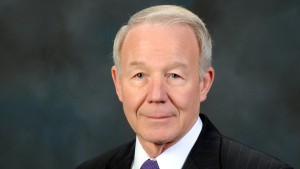The state’s prison system has been engaged in a massive, multiyear and multibillion-dollar effort to reduce its inmate population and improve health care delivery, mandated by a federal appeals' panel in a decision upheld by the Supreme Court. If you ask the Brown administration, the work is done – and it’s time for courts to let go of the reform process.
But the federal judges who have been overseeing the system have yet to relent. Now there's a new secretary of the Department of Corrections and Rehabilitation -- a man who has functioned as a consultant to and a critic of California prisons - Jeffrey Beard. (He still needs to be confirmed by the State Senate.)
Beard was the chief of the department of corrections in Pennsylvania when he first became involved with California as an expert on a panel that advised prisons about recidivism (the technical term for former prisoners reoffending and ending back behind bars). That was 2006. Beard returned in 2008 to advise the three-judge panel of federal judges that's been keeping a fire lit under the state to roll forward with reforms. Then in 2011, Beard began consulting for California directly. He estimates that he's visited 20 California prison facilities over the years.
I got a chance to ask him during an interview for The California Report what he thinks has changed in the prison system. For one thing, 43,000 inmates have been either farmed out to private and out-of-state prisons or diverted to local lockups.California prisons are running at about 150 percent of capacity -- which is to say, still overcrowded, but not as much as they used to be. Nonetheless, federal judges have repeatedly insisted the state reduce the population to 137 percent of capacity. What’s the difference between those two levels of overcrowding? About 10,000 inmates, Beard says.
On the face of it, that sounds like a lot of prisoners, and Beard himself has called on California to reduce its population. So how does he find a way to agree with Governor Brown now? Beard says the judges need to let go of "design capacity" as their benchmark for determining how much overcrowding will allow for a constitutionally acceptable level of inmate health care.
